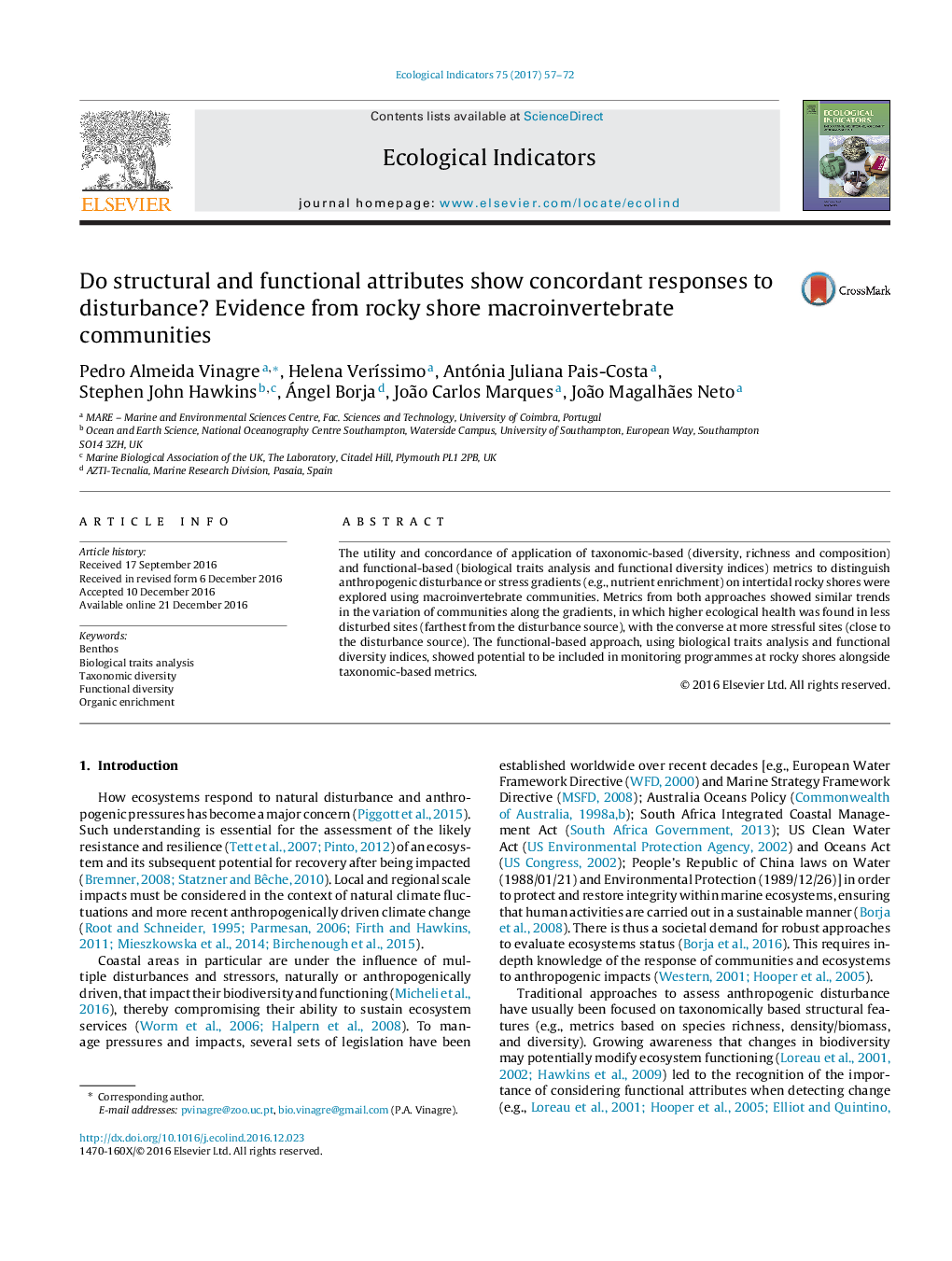| Article ID | Journal | Published Year | Pages | File Type |
|---|---|---|---|---|
| 5741797 | Ecological Indicators | 2017 | 16 Pages |
â¢Macroinvertebrate metrics were compared within disturbance gradients.â¢Taxonomic- and functional-based metrics showed similar trends along the gradients.â¢The metrics showed higher ecological condition for less disturbed sites.â¢Functional-based metrics showed potential to be included in monitoring programmes.
The utility and concordance of application of taxonomic-based (diversity, richness and composition) and functional-based (biological traits analysis and functional diversity indices) metrics to distinguish anthropogenic disturbance or stress gradients (e.g., nutrient enrichment) on intertidal rocky shores were explored using macroinvertebrate communities. Metrics from both approaches showed similar trends in the variation of communities along the gradients, in which higher ecological health was found in less disturbed sites (farthest from the disturbance source), with the converse at more stressful sites (close to the disturbance source). The functional-based approach, using biological traits analysis and functional diversity indices, showed potential to be included in monitoring programmes at rocky shores alongside taxonomic-based metrics.
Graphical abstractDownload high-res image (147KB)Download full-size image
